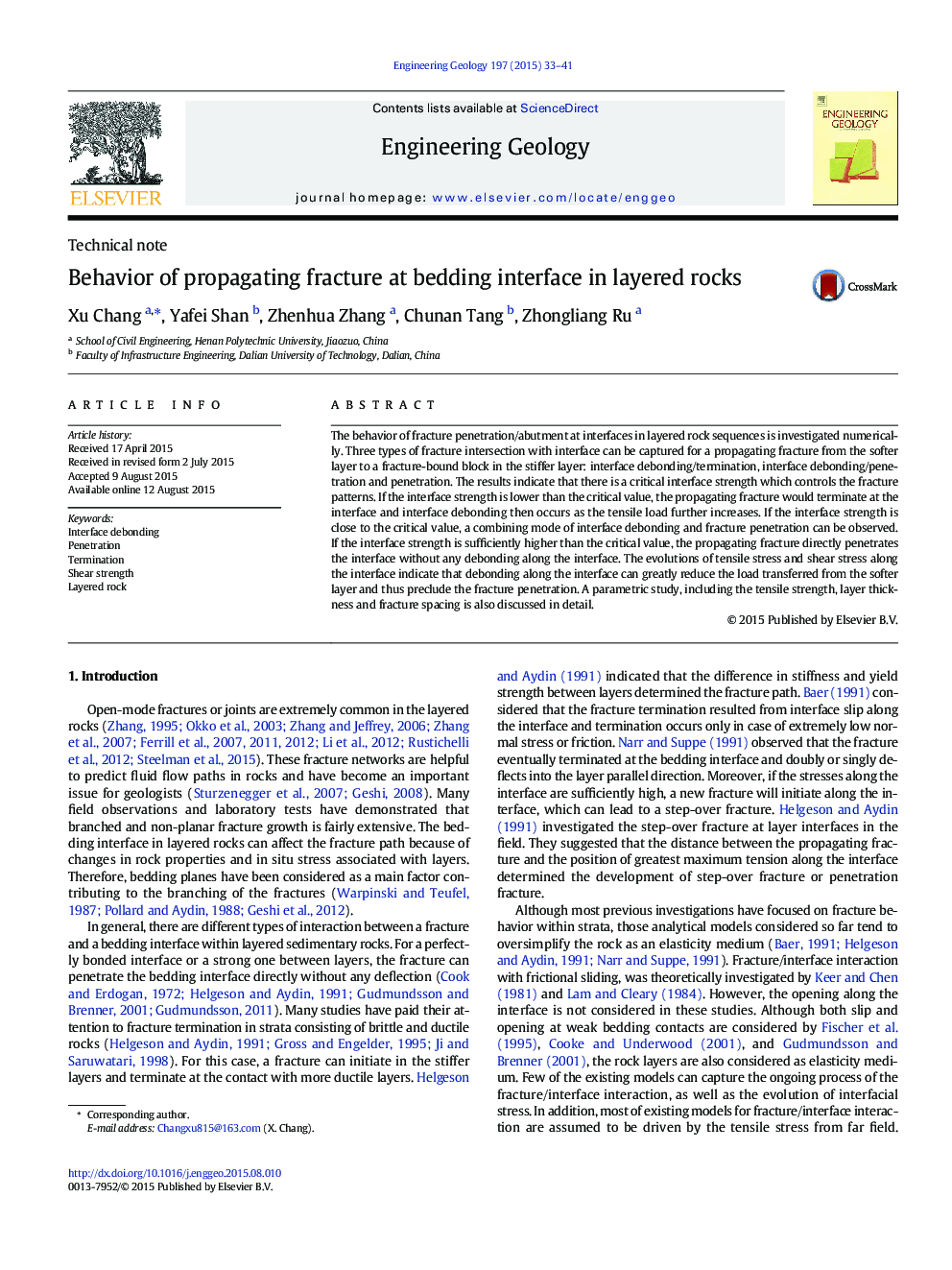| Article ID | Journal | Published Year | Pages | File Type |
|---|---|---|---|---|
| 6447710 | Engineering Geology | 2015 | 9 Pages |
Abstract
The behavior of fracture penetration/abutment at interfaces in layered rock sequences is investigated numerically. Three types of fracture intersection with interface can be captured for a propagating fracture from the softer layer to a fracture-bound block in the stiffer layer: interface debonding/termination, interface debonding/penetration and penetration. The results indicate that there is a critical interface strength which controls the fracture patterns. If the interface strength is lower than the critical value, the propagating fracture would terminate at the interface and interface debonding then occurs as the tensile load further increases. If the interface strength is close to the critical value, a combining mode of interface debonding and fracture penetration can be observed. If the interface strength is sufficiently higher than the critical value, the propagating fracture directly penetrates the interface without any debonding along the interface. The evolutions of tensile stress and shear stress along the interface indicate that debonding along the interface can greatly reduce the load transferred from the softer layer and thus preclude the fracture penetration. A parametric study, including the tensile strength, layer thickness and fracture spacing is also discussed in detail.
Related Topics
Physical Sciences and Engineering
Earth and Planetary Sciences
Geotechnical Engineering and Engineering Geology
Authors
Xu Chang, Yafei Shan, Zhenhua Zhang, Chunan Tang, Zhongliang Ru,
